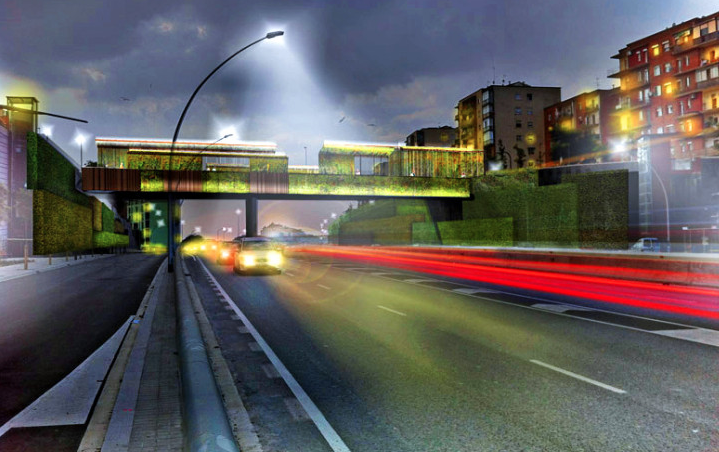Five places that keep spirit of Earth Hour alive all year
Digital Reporter
Thursday, March 17, 2016, 11:48 AM - This Saturday, millions of people in more than 160 countries will turn off the lights for an hour at 8:30 p.m. local time as a way to acknowledge climate and climate action.
The initiative was started in 2007 in Australia as an effort make people aware of their impact on they have on the environment.
While the event does its share to thrust conservationism into the spotlight, there are plenty of places that keep the spirit of Earth Hour alive all year long.
Here are five of them.
5. Barcelona, Spain: Smog-eating concrete
Spanish architects have announced plans to make a Barcelona bridge an eco-friendly powerhouse by coating it with pollution-eating concrete, adorning it with planted walls and adding paving that glows in the dark.
The goal is to provide pedestrians on the Sarajevo Bridge with better lighting and air quality.
Architects will use photocatalytic concrete on the bridge -- a self-cleaning material that absorbs and neutralizes pollution, converting it into a non-toxic substance that will be washed away by the rain.

Source: Dezeen
4. Germany: Solar energy
Germany is considered a world leader when it comes to solar power usage, with an estimated 1.4 million photovaltic (i.e., solar power) systems installed across the country. Germany's share of renewable energy currently sits at 31 percent -- and it is well on its way toward reaching the government's goal of 35 percent by the end of the decade. Italy isn't far behind, ranking as one of the world's largest producers of solar power.
Source: Clean Technica
![]() RELATED: Solar-powered roads could be the way of the future
RELATED: Solar-powered roads could be the way of the future
3. Vancouver, B.C.: Landfills
Vancouver is hoping to become the greenest city in the world by 2020 -- and officials have put in place a series of initiatives to ensure the goal is met. A $200 million makeover to the city's Old Stock Exchange building, for example, will boast a 35 percent reduction in energy costs and an 85 percent reduction in CO2 emissions upon completion in 2016. Reducing the amount of solid waste going to landfills by half and planting an additional 150,000 trees in the city are just two more of the dozens of initiatives underway in the city.
Source: Green Vancouver
2. Georgetown, Texas: Plants
This small community of 50,000 people announced its plans to become 100% reliant on wind and solar energy. Texas gets a lot of sun during the day and it's typically windy at night -- making the eco-initiative a perfect fit. The city will be working with SunEdison solar plants to generate over 9,500 gigawatt-hours of clean energy through the city through the year 2041. That's enough to power more than 24,000 homes a year for 25 years.
The project stands to create 800 jobs in the area during construction.
"SunEdison is very excited to be working with Georgetown Utility Systems to provide their customers with 100% renewable, clean energy," said Paul Gaynor, Executive Vice President of North America Utility and Global Wind at SunEdison in a press release.
"Georgetown is an exceptional city, and by going 100% renewable they will cut down on pollution, save water, and enjoy stable energy prices. They're able to accomplish all of this without spending a penny up front with SunEdison's power purchase agreement. Georgetown is a model for other cities that hope to become powered by clean renewable energy."
Source: SunEdison
1. Costa Rica: Hydropower
Costa Rica made headlines last year when it announced the country used no fossil fuels for the first 75 days of 2015.
You read that right: 100% of Costa Rica's electricity came from renewable energy, courtesy of hydropower and geothermal plants.
This was made possible, in part, by heavy rainfall that enabled four hydroelectric dams to run above capacity, enabling the country to temporarily abandon fossil fuel generators.
In 2014, the small nation got 80% of its electricity from hydro and 10% from geothermal resources.
Costa Rica has a substantial amount of eco-infrastructure in place and is fast becoming a world leader in putting the planet first.
Source: Vox



